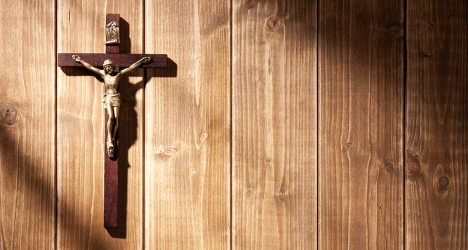Massimo Bitonci announced the new rule on Facebook on Wednesday.
(function(d, s, id) { var js, fjs = d.getElementsByTagName(s)[0]; if (d.getElementById(id)) return; js = d.createElement(s); js.id = id; js.src = “//connect.facebook.net/en_GB/all.js#xfbml=1”; fjs.parentNode.insertBefore(js, fjs); }(document, ‘script’, ‘facebook-jssdk’));
Accompanying the post was a picture of Bitonci, a Northern League (Lega Nord) senator who was elected mayor earlier this month, smiling and clutching a crucifix.
The news received a mixed reaction from Italians, with comments posted ranging from “well done” to “ridiculous”.
“Great Bitonci, everyone should be like you,” wrote one Facebook user, while another expressed the opposing opinion: “Italy is a secular country! Whoever wants to impose a religious simple is disrespectful of others and should be stopped! Bitonci, feel ashamed!”
The Padua area has been the centre of the debate over crucifixes in schools in recent years, following a legal battle started in the town of Abano Terme.
Soile Lautsi, whose two sons attended a school in the town, went to court in 2002 in a bid to have crucifixes removed from the walls of her children’s classrooms.
The legal battle ran through the Italian and European courts, until the European Court of Human Rights in 2011 ruled against Lautsi.
“A crucifix on a wall was an essentially passive symbol,” the ruling said, which was not seen as having an influence on pupils despite being “above all a religious symbol”.



 Please whitelist us to continue reading.
Please whitelist us to continue reading.
Member comments